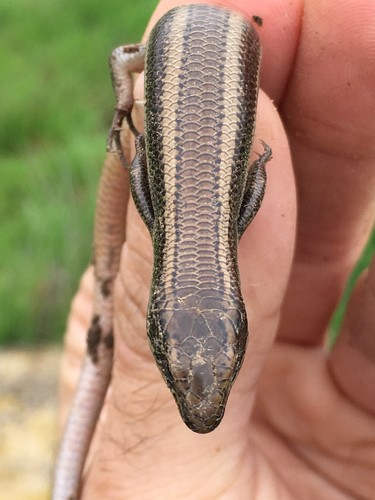Plestiodon skiltonianus interparietalis
A species of Skinks Scientific name : Plestiodon skiltonianus interparietalis Genus : Skinks
Plestiodon skiltonianus interparietalis, A species of Skinks
Scientific name: Plestiodon skiltonianus interparietalis
Genus: Skinks
Content
Description General Info
 Photo By amplex4love , used under ALL RIGHTS RESERVED /Cropped and compressed from original
Photo By amplex4love , used under ALL RIGHTS RESERVED /Cropped and compressed from original Description
Plestiodon skiltonianus interparietalis showcases sophisticated thermo-regulatory behaviors: it often basks in the sun for warmth and, during colder months, retreats to underground burrows for hibernation. Additionally, it exhibits a distinct food-seeking strategy consisting of slow, stealthy movement punctuated by rapid lunges to seize prey. This balance of thermal management and efficient hunting marks plestiodon skiltonianus interparietalis as a distinguishing species in the ecosystem.
General Info
Lifespan
6-10 years
Diet
Plestiodon skiltonianus interparietalis is an opportunistic, insectivorous species, displaying a preference for spiders, centipedes, and beetles. Their diet may also include snails, soft-bodied insects, and some plant material.
Appearance
Plestiodon skiltonianus interparietalis is a small-sized skink with a sleek, elongated body. It's scale-covered skin is generally brown, often displaying darker, parallel stripes alongside its back and tail. Additionally, juveniles exhibit bright blue tails, a feature that fades in color as the animal matures. Notably, this skink lacks any wings, horns, or other significantly protruding features.
Behavior
Plestiodon skiltonianus interparietalis is a solitary and secretive skink, focused on terrestrial foraging during daytime. Its behavioral specialty is tail autotomy, a survival tactic where the tail snaps off when seized, distracting predators. It remains in home ranges emphasizing rock outcroppings, using crevices for concealment and winter hibernation. Territorial aggression is rare, often relying on its discreet appearance for avoiding confrontations.